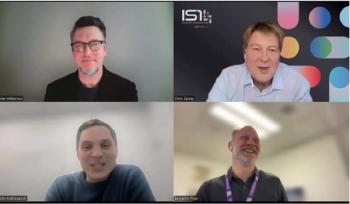
Microrobots to Perform Eye Surgery
The nanotechnology vision of tiny microrobots that could move inside the body carrying out complex surgical repairs has been touted incessantly until it has become a clich?.
The nanotechnology vision of tiny microrobots that could move inside the body carrying out complex surgical repairs has been touted incessantly until it has become a cliché. Although working “nanobots” may lie somewhere in the future, work in progress at the Swiss Federal Institute of Technology in Zurich (ETHZ) is bringing this incredible idea closer to reality. The group's first goal is to apply this technology to eye surgery.
Bradley Nelson, PhD, and his colleagues at the Institute of Robotics and Intelligent Systems at ETHZ are pursuing the development of biomedical robots designed to be steered magnetically through bodily fluids. Much of the Zurich team's published research deals with the behavior of tiny devices suspended in fluid and how magnetic fields can be used to guide them to their targets. The concept of using a controlled external magnetic field to move magnetized beads through the body is not new, but Nelson's approach is more audacious. Whereas previous applications have aimed at moving drugs mounted on magnetic beads to target specific regions, the current technology seeks to actively repair lesions within the body. Among the various possible organs for such machines, the eye is a particularly tempting target.
The posterior chamber of the eye is filled with the vitreous humor, a transparent, viscoelastic substance that occupies a large portion of the eyeball. During conventional ocular surgery much of the vitreous humor is removed to provide a work space to repair detached retinas or remove tumors and overgrown blood vessels that threaten the eye. However, Nelson proposes a much less invasive technique in which a syringe would perforate the eyeball and introduce the microrobots into the eye without disrupting the vitreous humor.
The microrobots (so tiny that they will fit through the barrel of a syringe) would move like miniature submarines using proven micro-electro-mechanical systems (MEMS) technology to carry micro-needles, micropumps, and force and chemical sensors for surgical and diagnostic tasks. Their movement through the eye can be monitored through the pupil by an external microscope.
Nelson is developing a three-dimensional visual servoing approach that allows the investigator to track the progress of the devices toward the pathologic regions. “Servoing” is the term used to describe the guiding of these tiny submarines through the fluid medium. The concept involves controlled magnetic fields created by a set of coils to steer the microrobot while the active microscope provides real-time three-dimensional position feedback.
It would be naïve to ignore the many technical challenges faced by the Swiss team. The eye is difficult to access with a microscope that can track the robotic devices in three dimensions, and visualizing other regions of the body would be even more challenging. Packing the microrobots with all the hardware required for their mission will call for sophisticated nanoassembly techniques. In addition, moving these devices through the US and European regulatory approval processes will doubtless take years.
All these tasks are solvable, however, and the excitement inherent in the challenges of repairing the body through such elegant strategies will motivate researchers for years to come.
A video animation of a microrobot being used for eye surgery may be downloaded from the Institute’s web site (
-K. John Morrow, Jr., PhD and Julie Smith-Morrow, PhD
Newsletter
Stay at the forefront of biopharmaceutical innovation—subscribe to BioPharm International for expert insights on drug development, manufacturing, compliance, and more.





